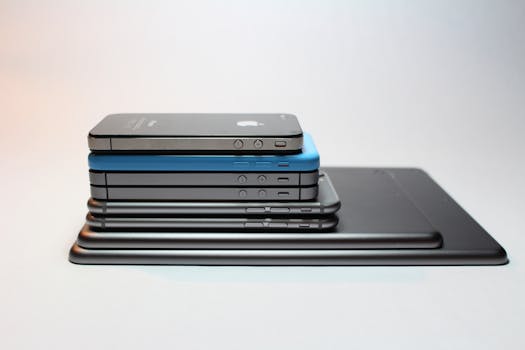Exploring the Benefits of Second Hand Smartphones
Second-hand smartphones are becoming an increasingly popular choice among consumers who seek functionality, affordability, and sustainability in their tech purchases. With the ever-growing demand for smartphones, the resale market has emerged as a viable solution for those looking to upgrade or replace their devices without breaking the bank.

Whether it's due to financial constraints, environmental concerns, or the desire to access premium features at a reduced cost, the appeal of second-hand phones is undeniable.
The Financial Appeal of Second-Hand Smartphones
One of the most compelling reasons people gravitate toward pre-owned smartphones is the significant cost savings. Purchasing a second-hand device can save consumers hundreds of dollars compared to buying a brand-new model. Flagship models like the iPhone or Samsung Galaxy often see a price drop of 20-50% within just a year of their release when sold second-hand. This makes high-end technology more accessible to a wider audience.
In addition to upfront savings, second-hand purchases also help avoid hidden costs associated with new phones, such as higher insurance premiums or expensive repair fees for proprietary parts. Many resellers and marketplaces also offer refurbished devices that come with warranties, providing peace of mind and added value at a lower price point.
For budget-conscious buyers, platforms like Swappa, Gazelle, and eBay provide numerous options for exploring certified pre-owned devices. These platforms also facilitate secure transactions, ensuring buyers get functional products without overpaying.
Environmental Benefits and Sustainability
The environmental impact of manufacturing smartphones cannot be overlooked. According to a study by McMaster University, producing one smartphone generates an average of 85 kilograms of CO2 emissions due to the extraction of raw materials and energy-intensive manufacturing processes. Opting for second-hand devices reduces this carbon footprint by extending the lifecycle of existing gadgets rather than contributing to increased demand for new production.
Electronic waste (e-waste) remains a growing global concern. The United Nations reported that nearly 54 million metric tons of e-waste were generated in 2019 alone, with only 17% properly recycled. By choosing second-hand smartphones, consumers play an active role in minimizing e-waste and promoting sustainable consumption habits.
Some organizations have taken steps to encourage this behavior further. Companies like Apple and Samsung now offer trade-in programs where old devices are refurbished and resold or responsibly recycled. Such initiatives not only benefit consumers but also align with broader efforts toward reducing environmental harm caused by electronic products.
Accessing Premium Features on a Budget
Second-hand smartphones provide an opportunity to experience premium features without paying premium prices. Devices that are just one or two generations old often boast high-end capabilities such as powerful processors, advanced cameras, and large OLED displays – features that are still highly competitive with current-generation models.
Purchasing a used iPhone 12 Pro instead of a new iPhone 15 Pro allows users to enjoy many similar functionalities at almost half the cost. Similarly, older Samsung Galaxy models like the S21 Ultra still offer remarkable performance in photography and productivity while being much more affordable on resale platforms.
This option is particularly appealing for students, young professionals, or anyone who values cutting-edge technology but prefers not to pay top dollar for it. As smartphone innovation stabilizes with incremental updates each year, buying slightly older devices makes even more sense financially.
- Latest software updates remain accessible for most older models.
- Resale marketplaces often include certified refurbished options with warranties.
- Premium accessories can also be found at discounted rates alongside second-hand phones.
Challenges and Considerations When Buying Second-Hand Smartphones
While the benefits are numerous, it's essential to approach second-hand smartphone purchases with caution. Understanding potential risks and taking preventive steps can help ensure a positive experience.
The most common concern is device authenticity and condition. Consumers should carefully inspect listings for details about scratches, battery health, storage capacity, and overall wear-and-tear before making a purchase. Trusted platforms that offer buyer protection policies or verified sellers are ideal starting points for those new to purchasing pre-owned devices.
Another factor to consider is software compatibility. Older models may not receive operating system updates indefinitely, limiting access to new features or leaving devices vulnerable to security risks over time. Researching model-specific software support timelines ensures buyers make informed choices based on their needs and priorities.
| Aspect | Key Considerations |
|---|---|
| Device Authenticity | Ensure IMEI numbers match between the device and box; use tools like CheckMEND. |
| Battery Health | Aim for at least 80% battery capacity remaining; inquire about replacement costs if needed. |
| Warranty Options | Look for refurbished devices offering limited warranties from reputable sellers. |
| Software Compatibility | Confirm OS update availability based on the phone's age and brand policies. |
| Sourcing Platforms | Select trusted marketplaces with buyer protection policies such as Swappa or Gazelle. |
A final consideration lies in network compatibility. Some phones may be locked to specific carriers or regions depending on where they were initially purchased. Confirming network compatibility with your local provider avoids unnecessary complications post-purchase.
A Thoughtful Choice: Balancing Cost and Value
The decision to buy a second-hand smartphone ultimately hinges on balancing affordability with quality assurance. By investing time in research and opting for reliable platforms or retailers offering warranties, buyers can maximize both cost savings and value derived from their purchase.
This growing trend reflects a broader shift toward mindful consumerism – one that prioritizes sustainability alongside financial responsibility. Choosing pre-owned technology not only empowers individuals but also contributes positively toward environmental preservation by reducing e-waste generation globally.
As you consider your next smartphone purchase, exploring the second-hand market could open up opportunities you hadn’t thought possible before – from accessing premium features at lower prices to supporting eco-conscious practices effortlessly integrated into everyday life.
